RARE! WWII 1945 USAAF B-29 Special Air Navigation Aerial Bombing Mission Map (Iwo Jima, Okinawa, Japan Missions)


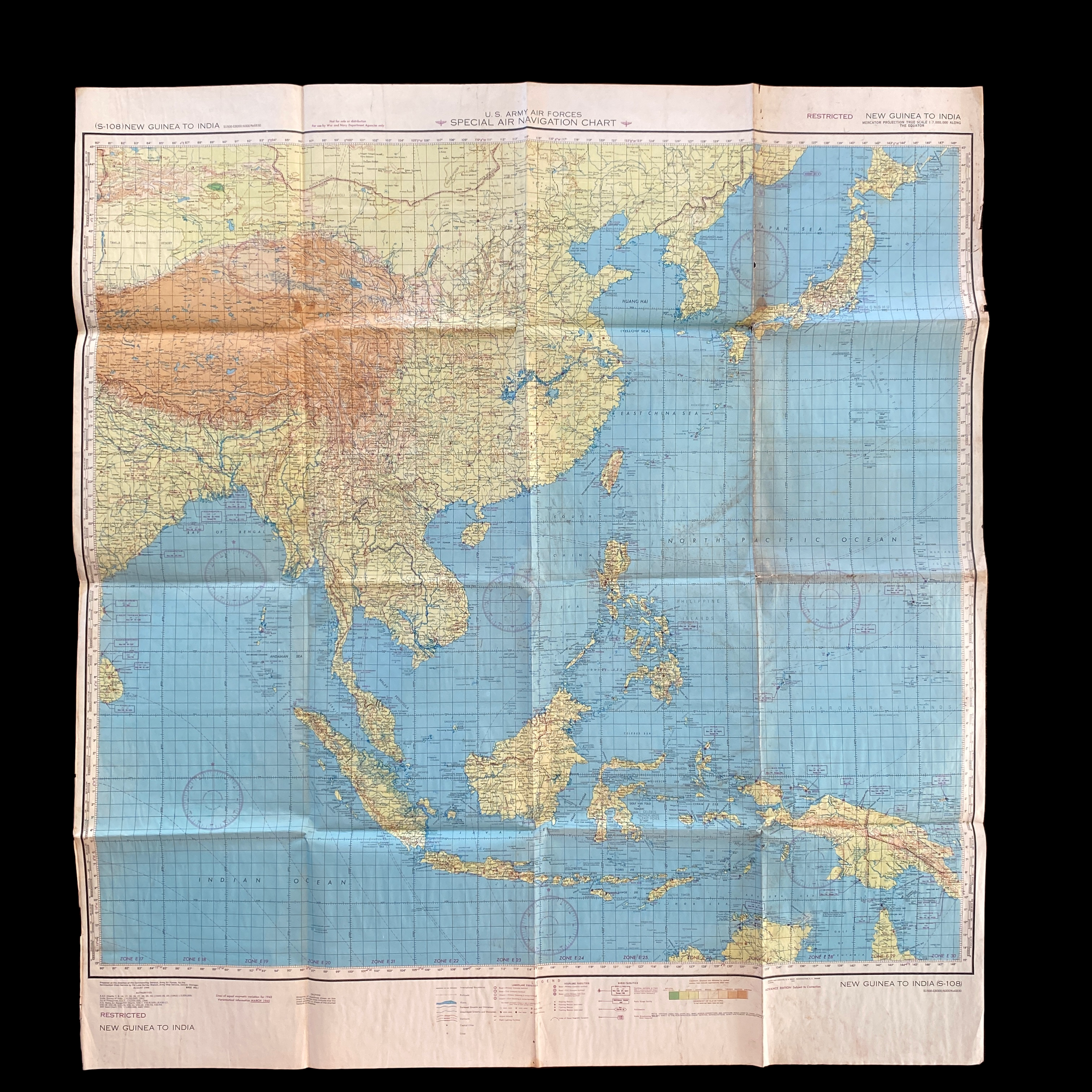
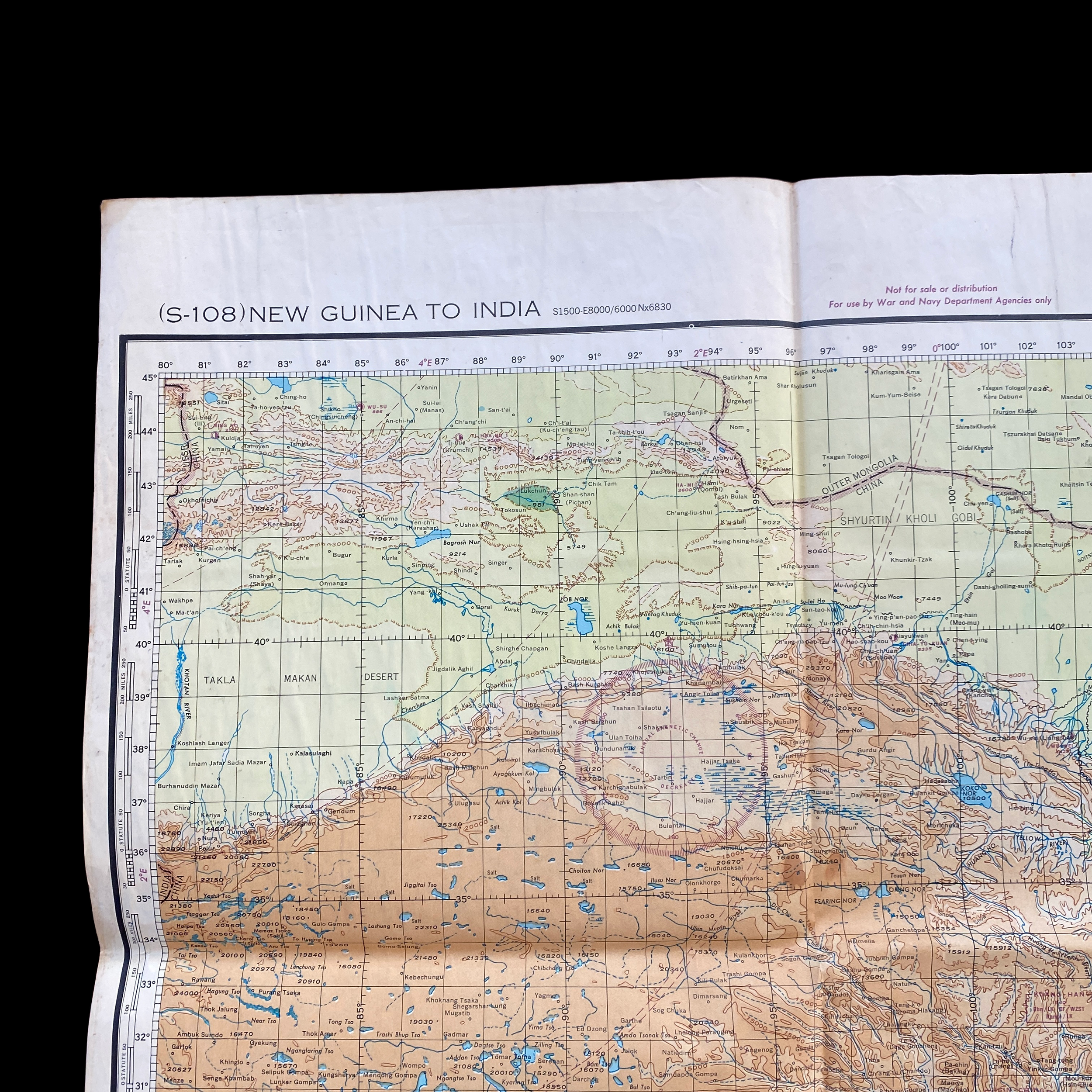
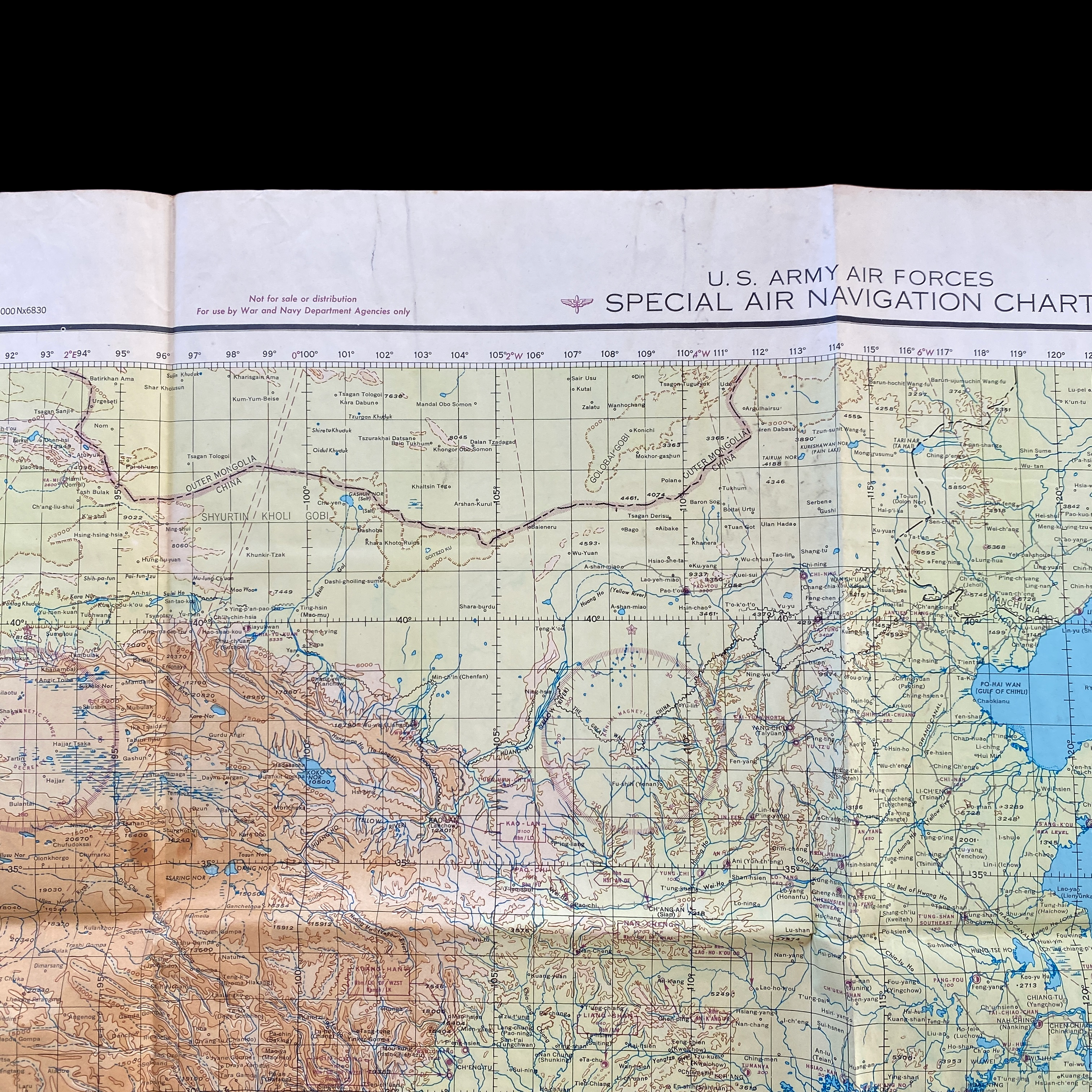
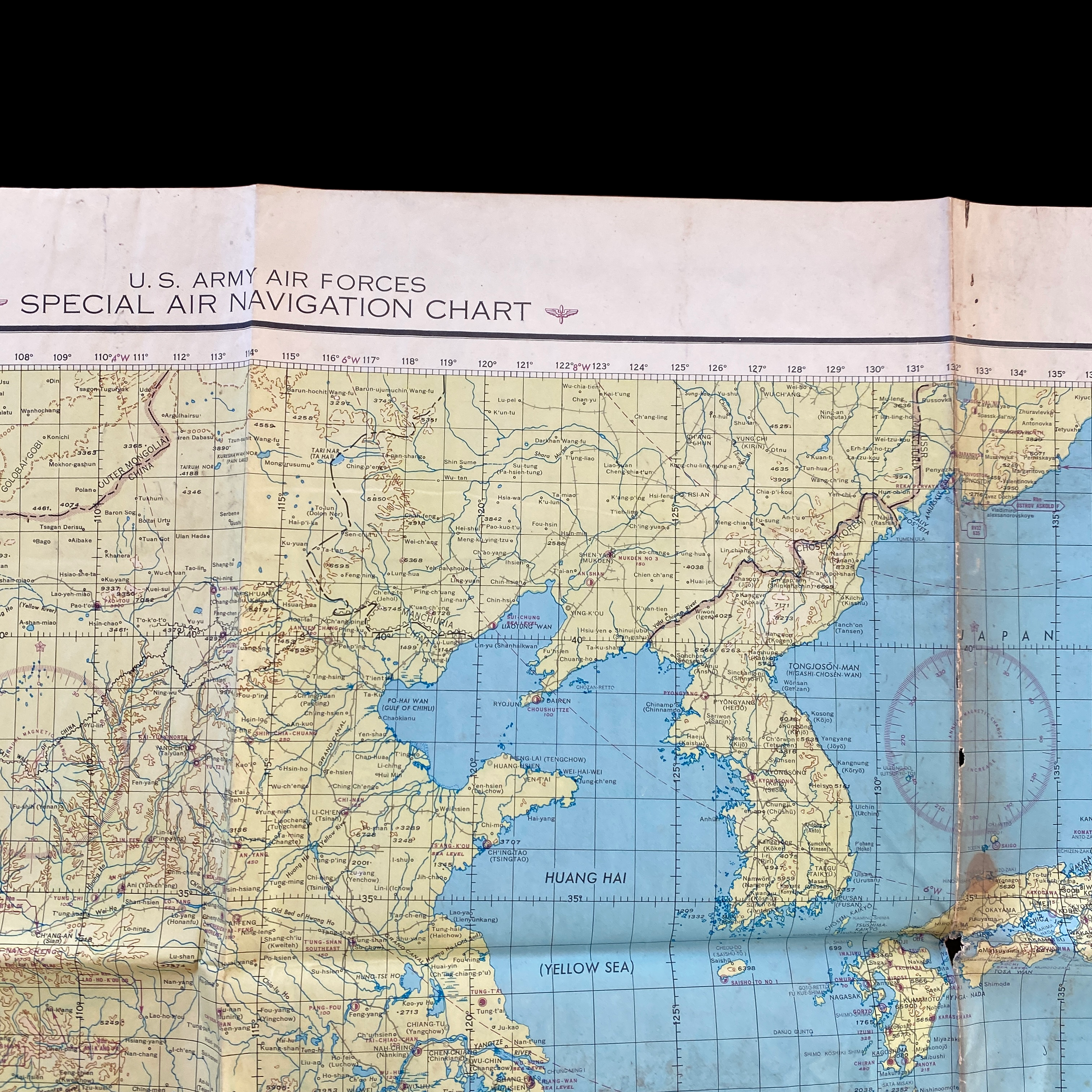

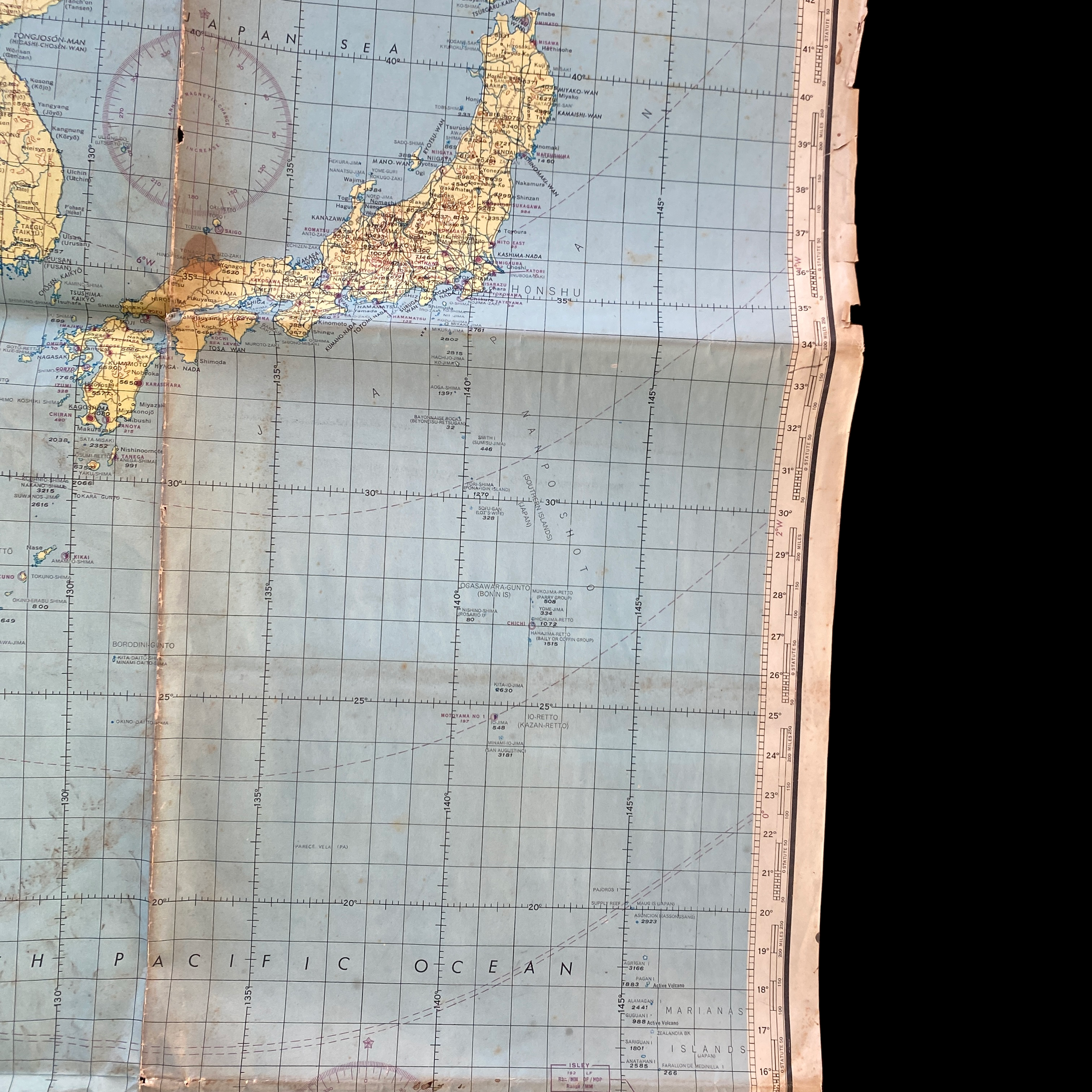
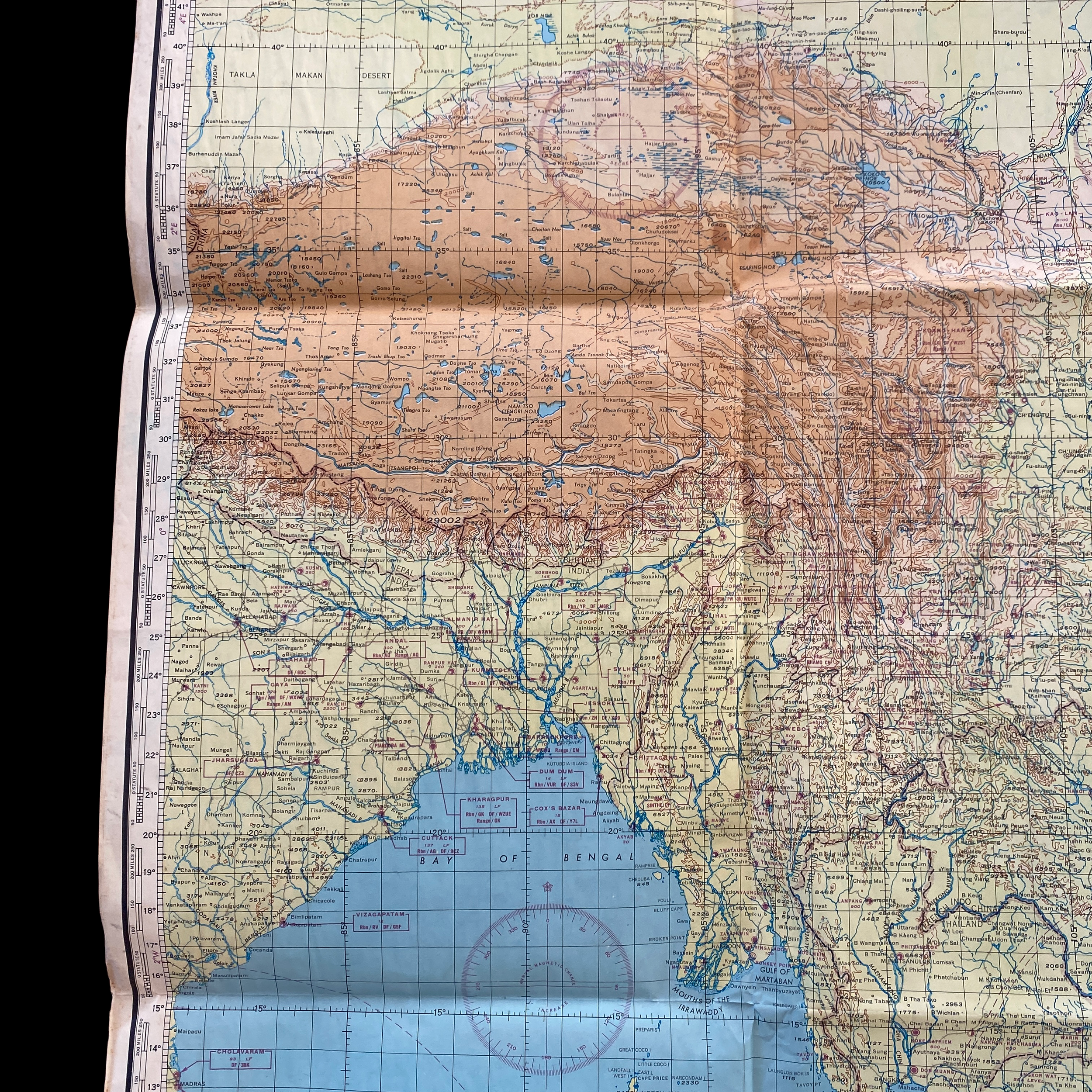
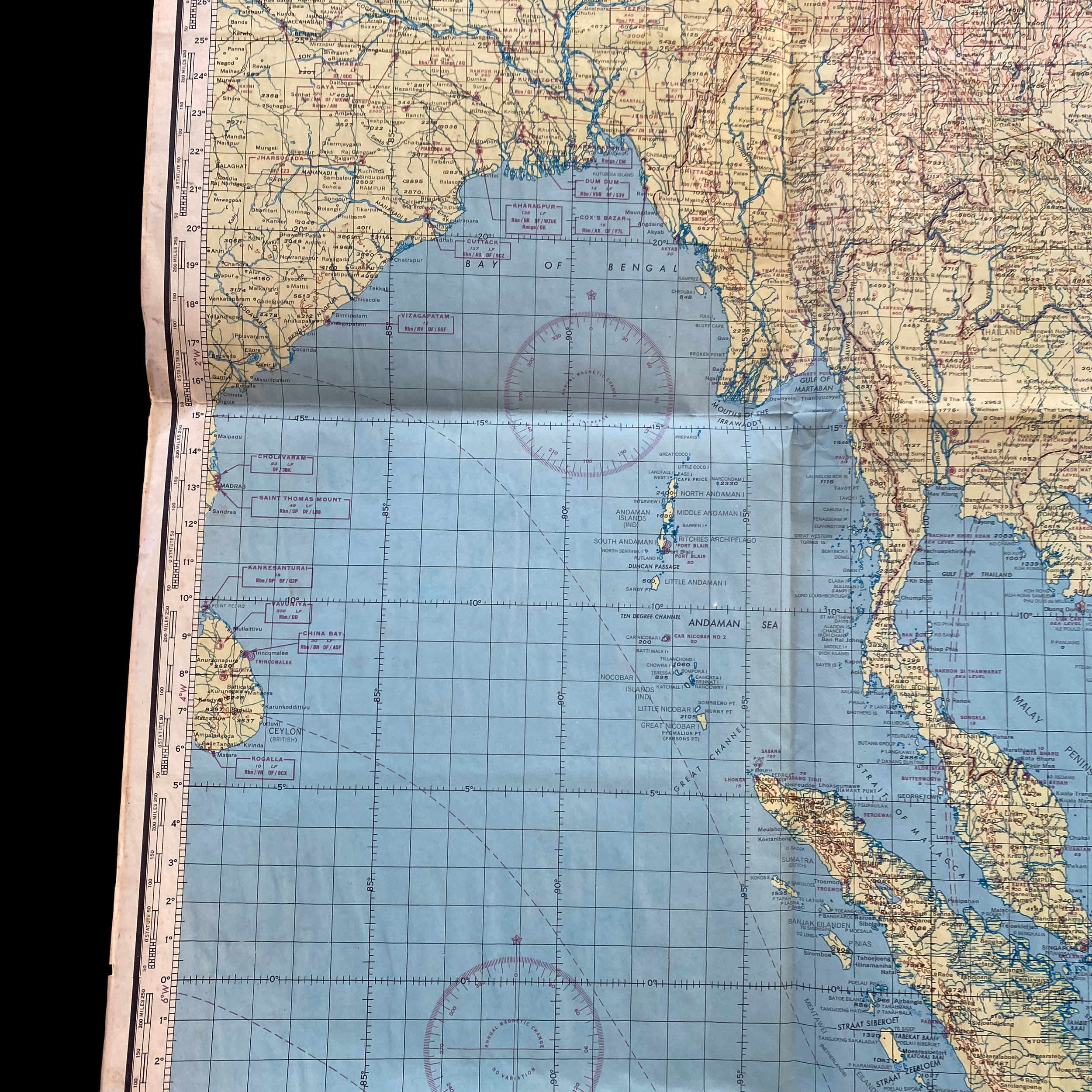
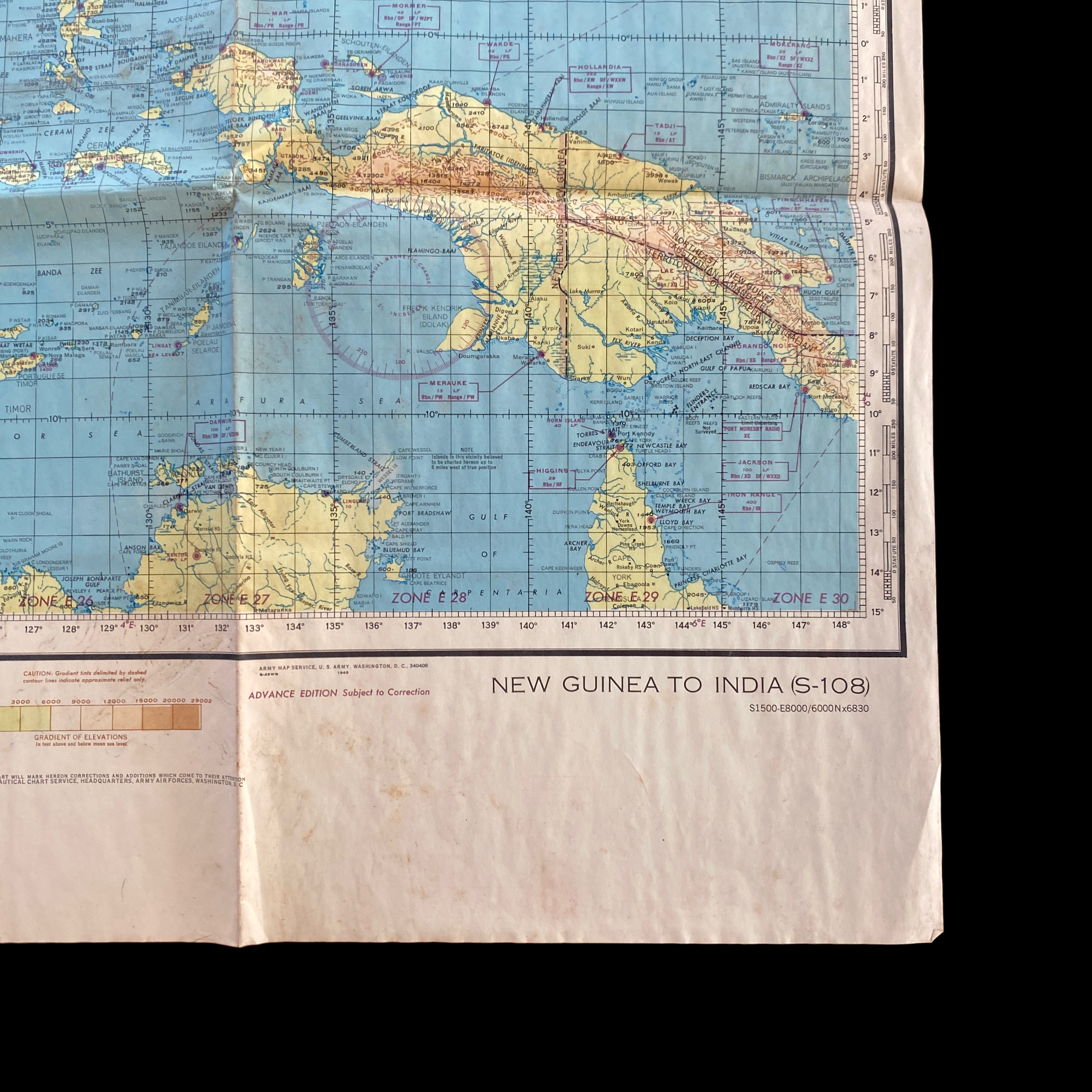


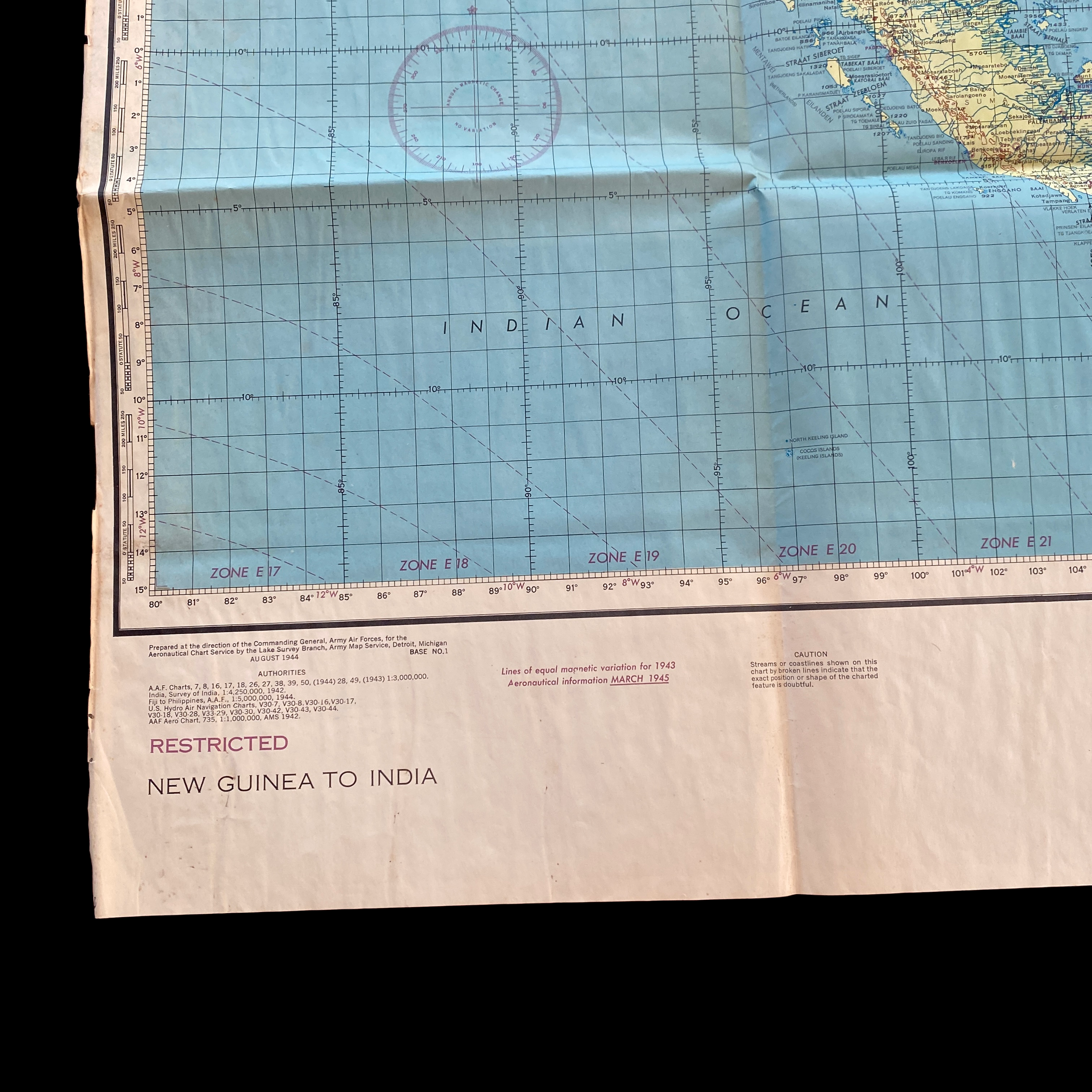

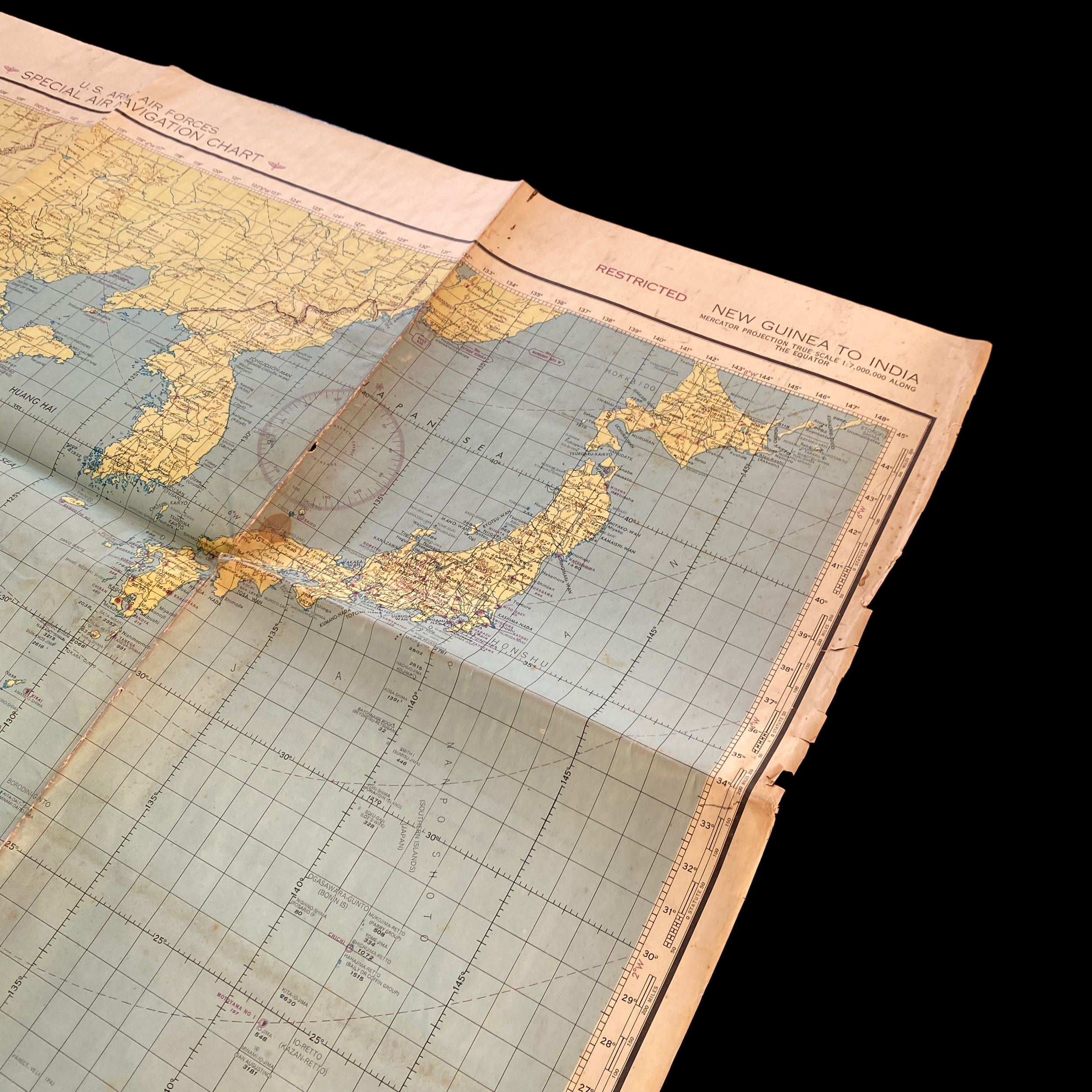
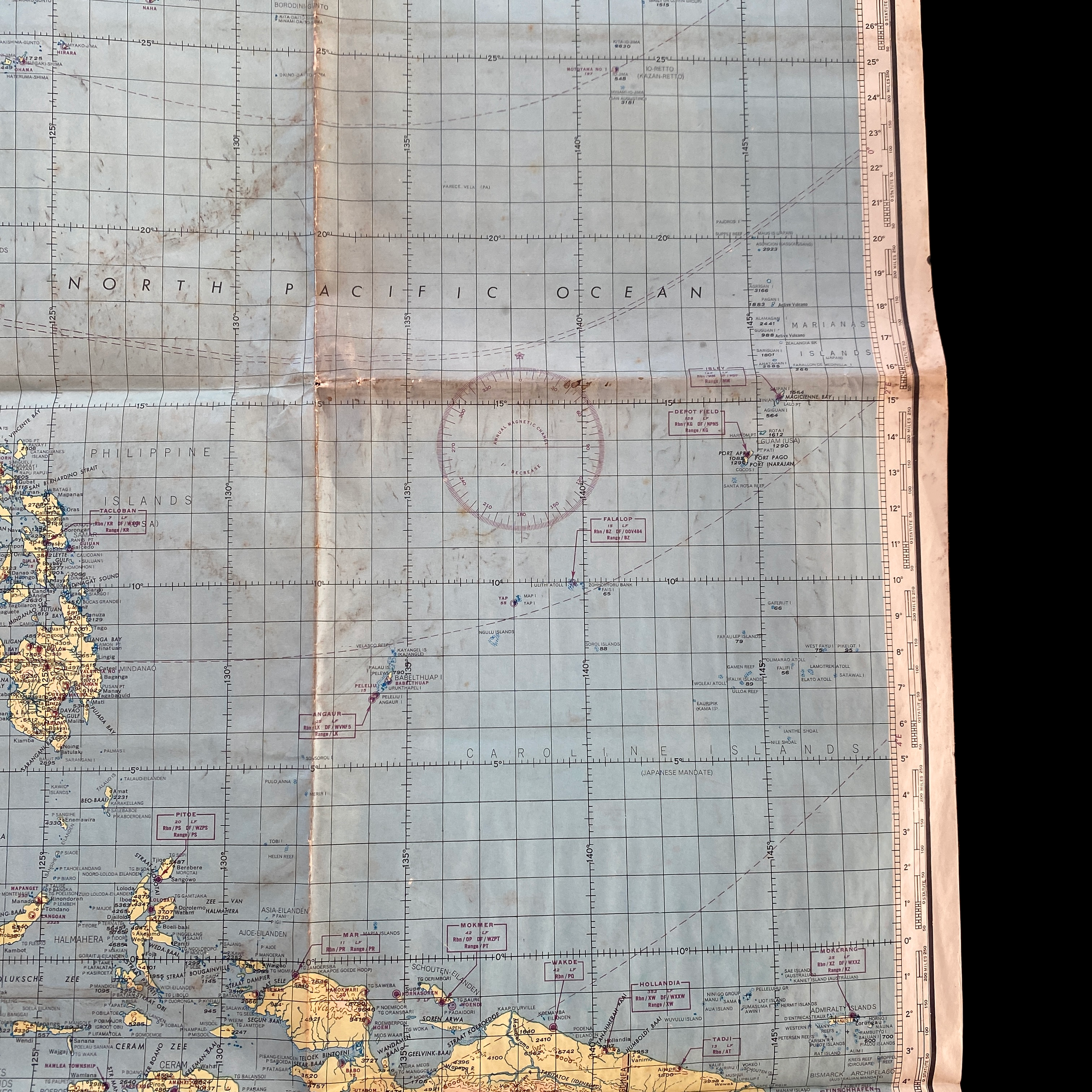
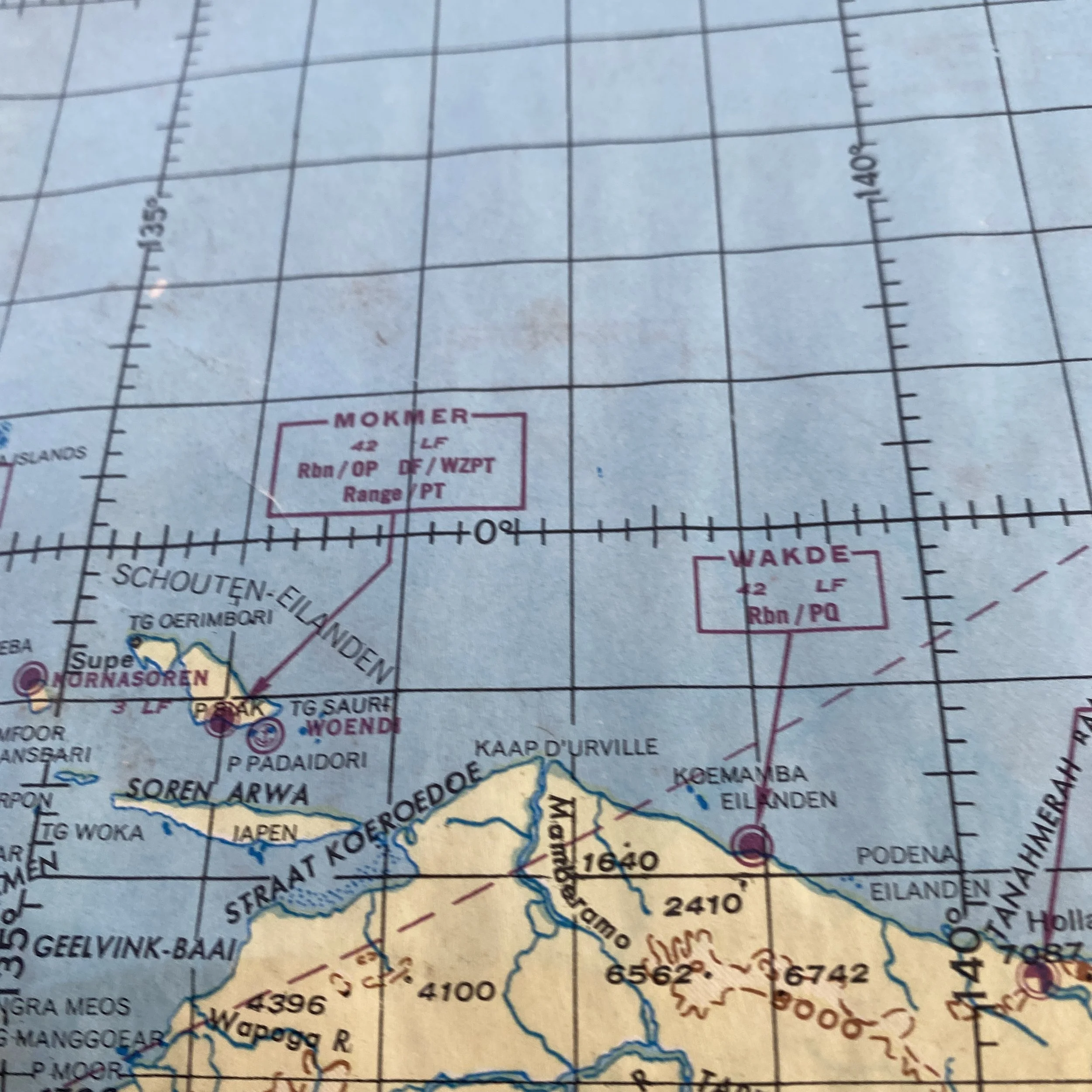

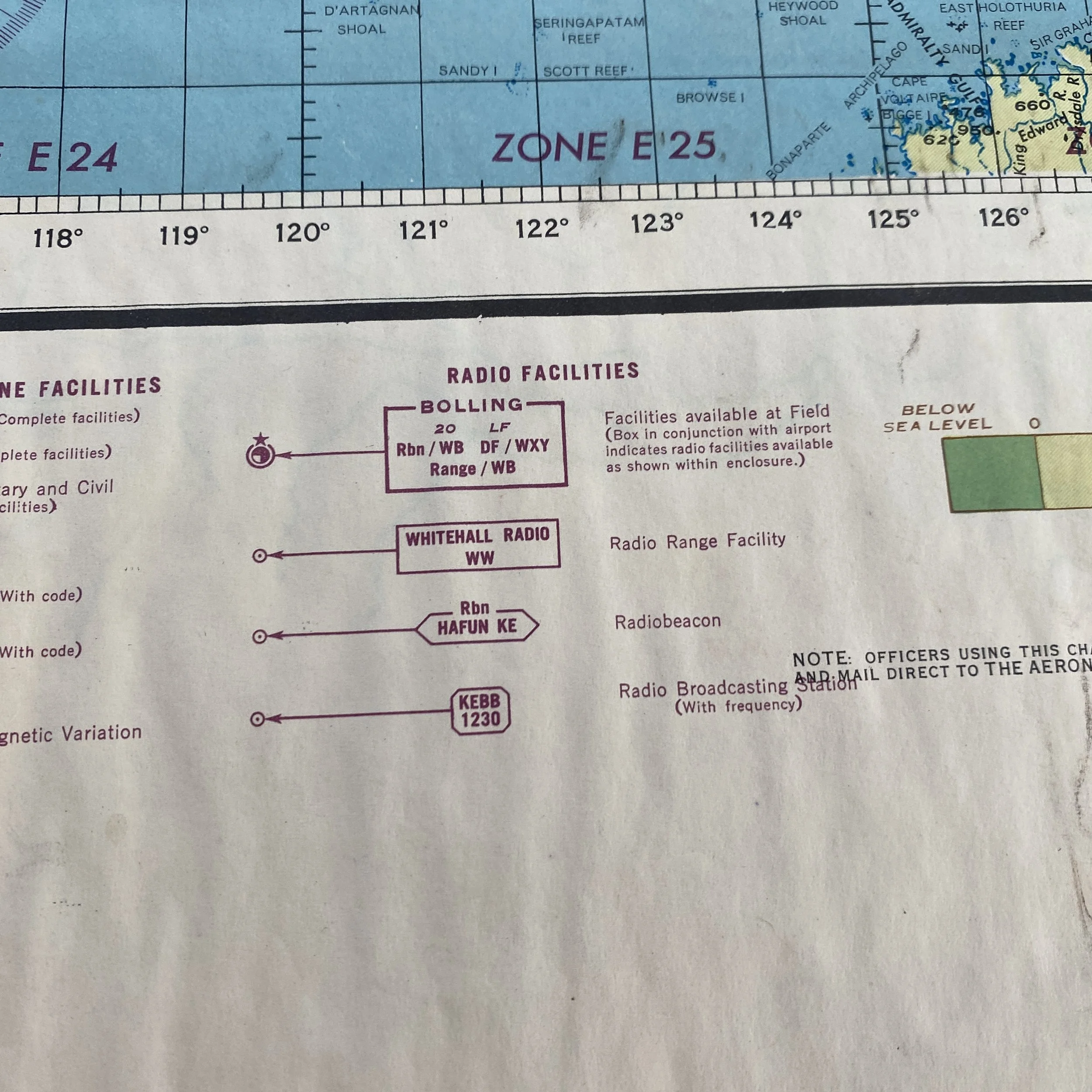
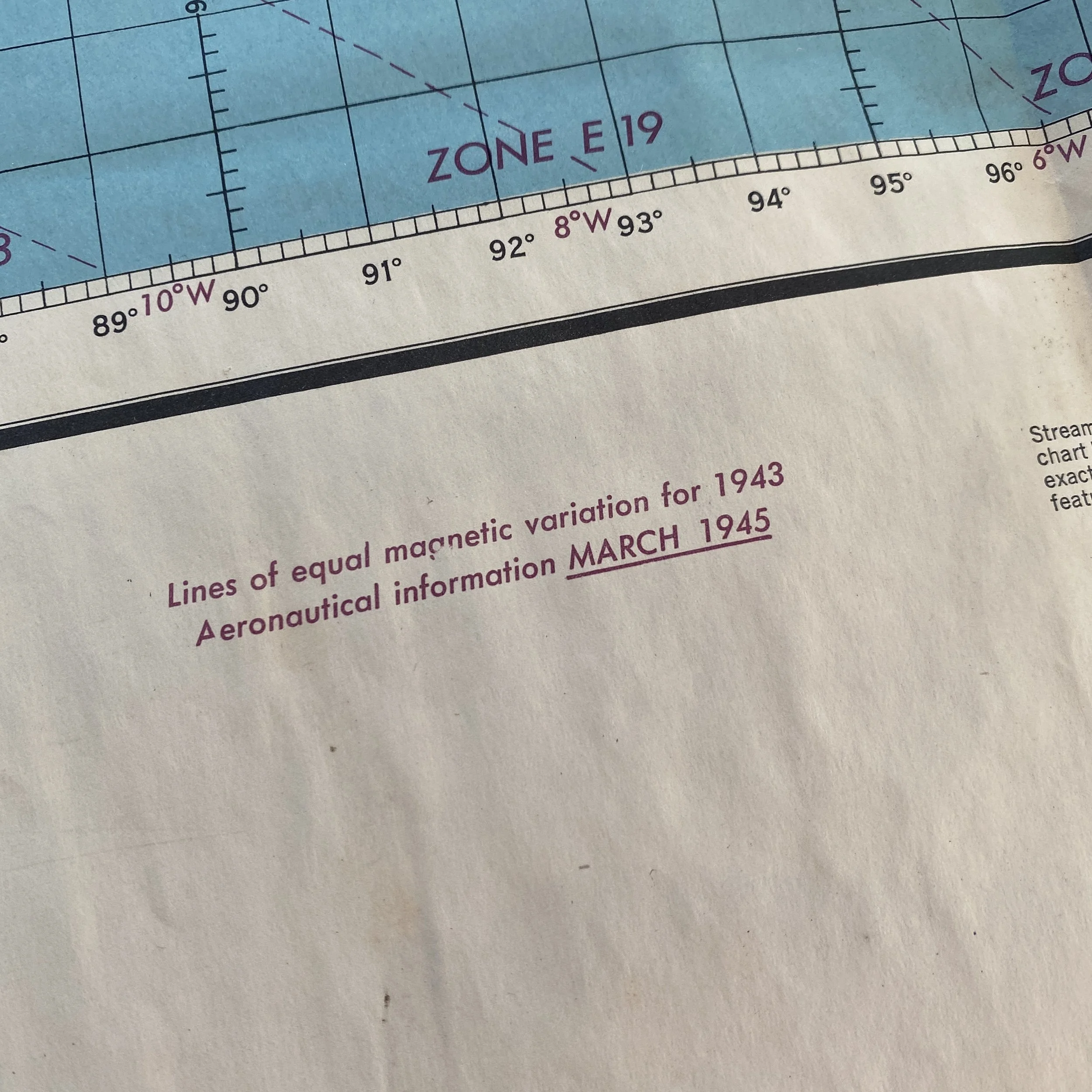




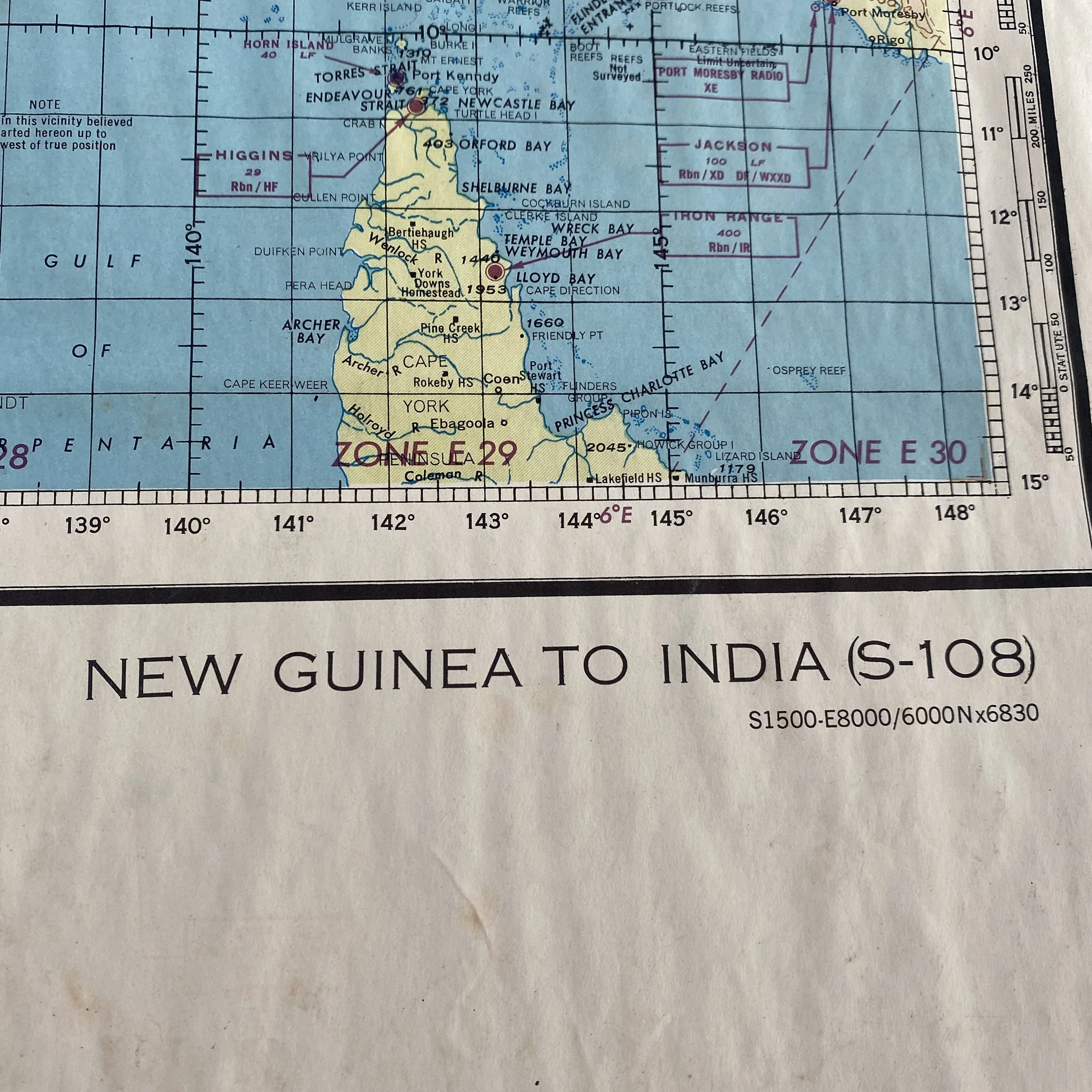
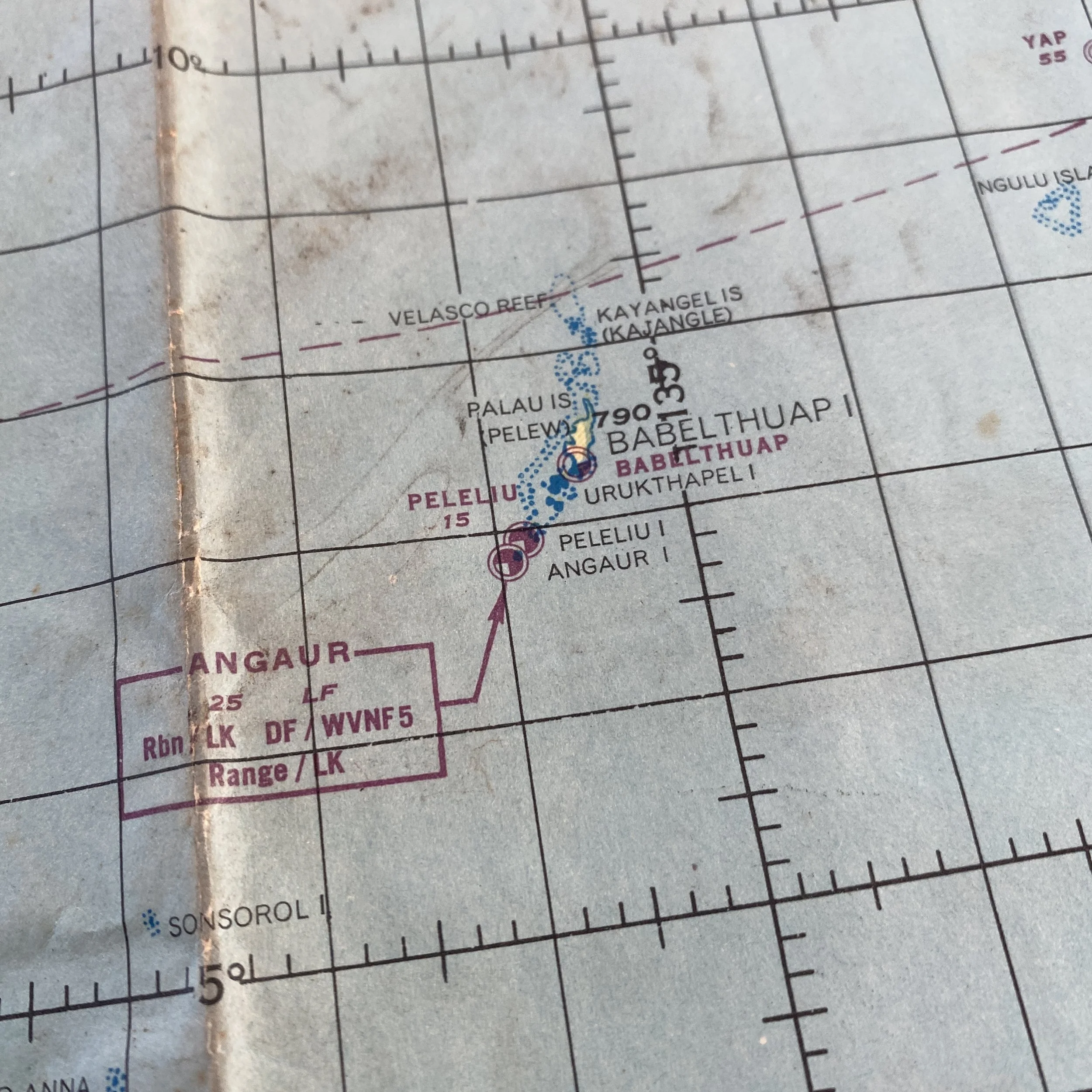
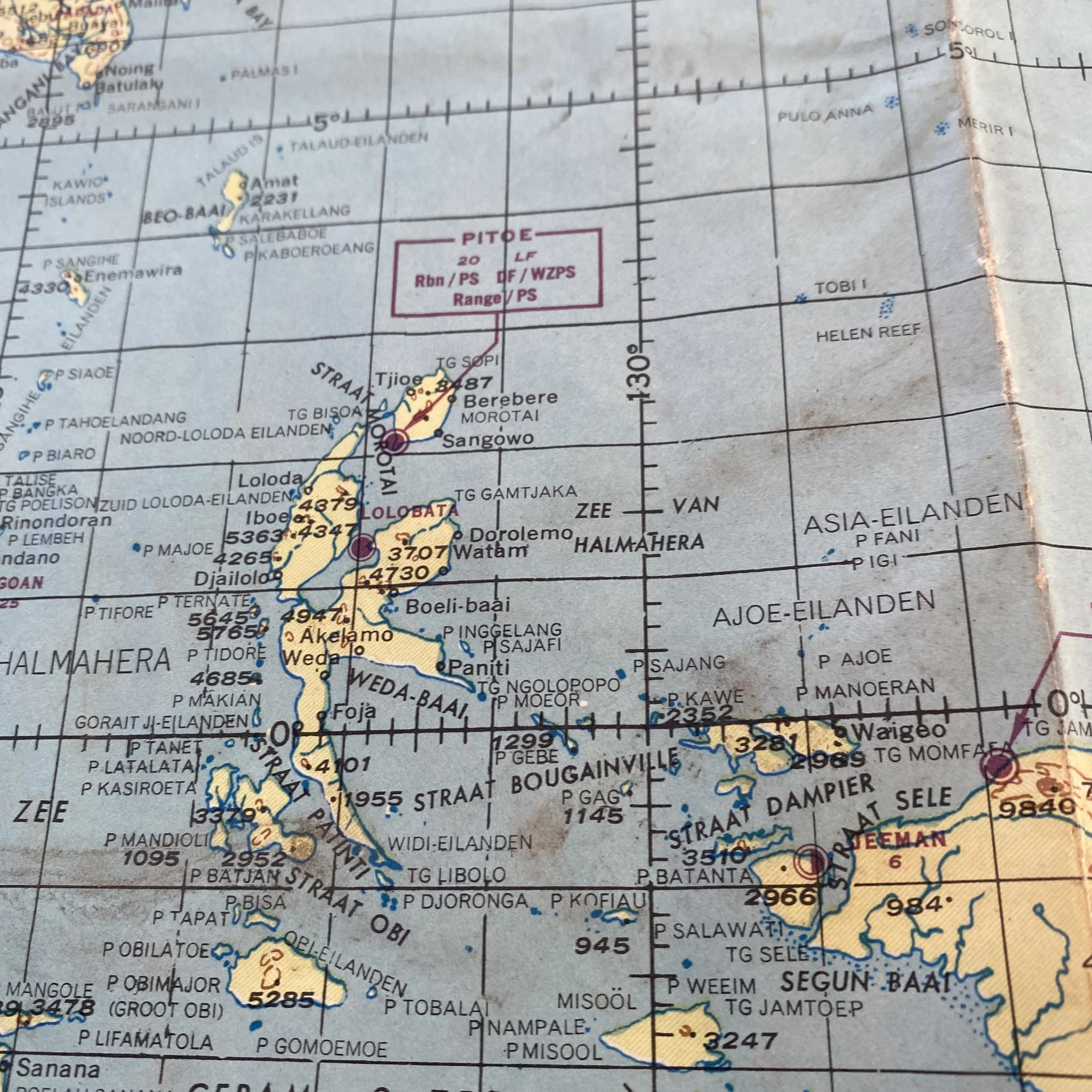






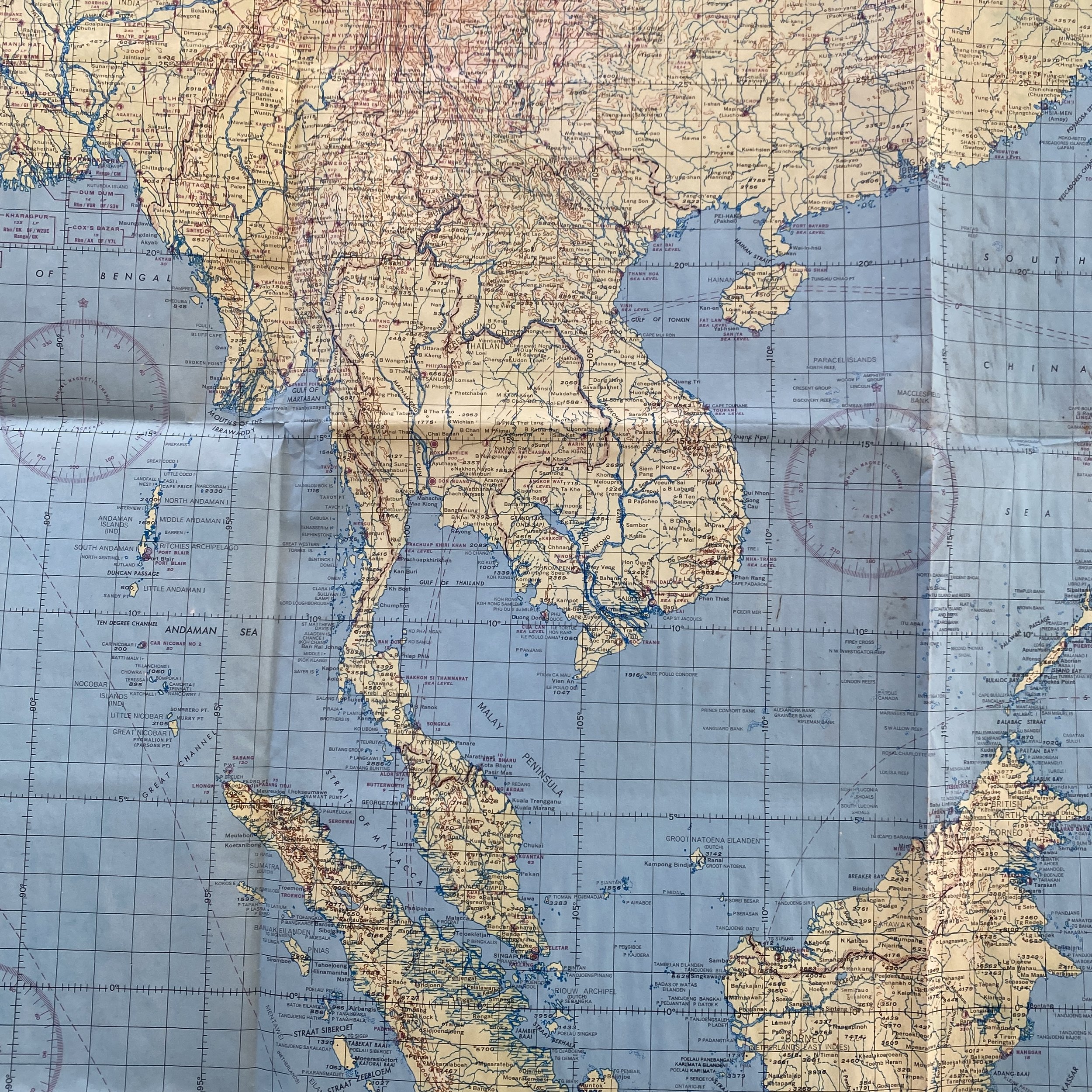
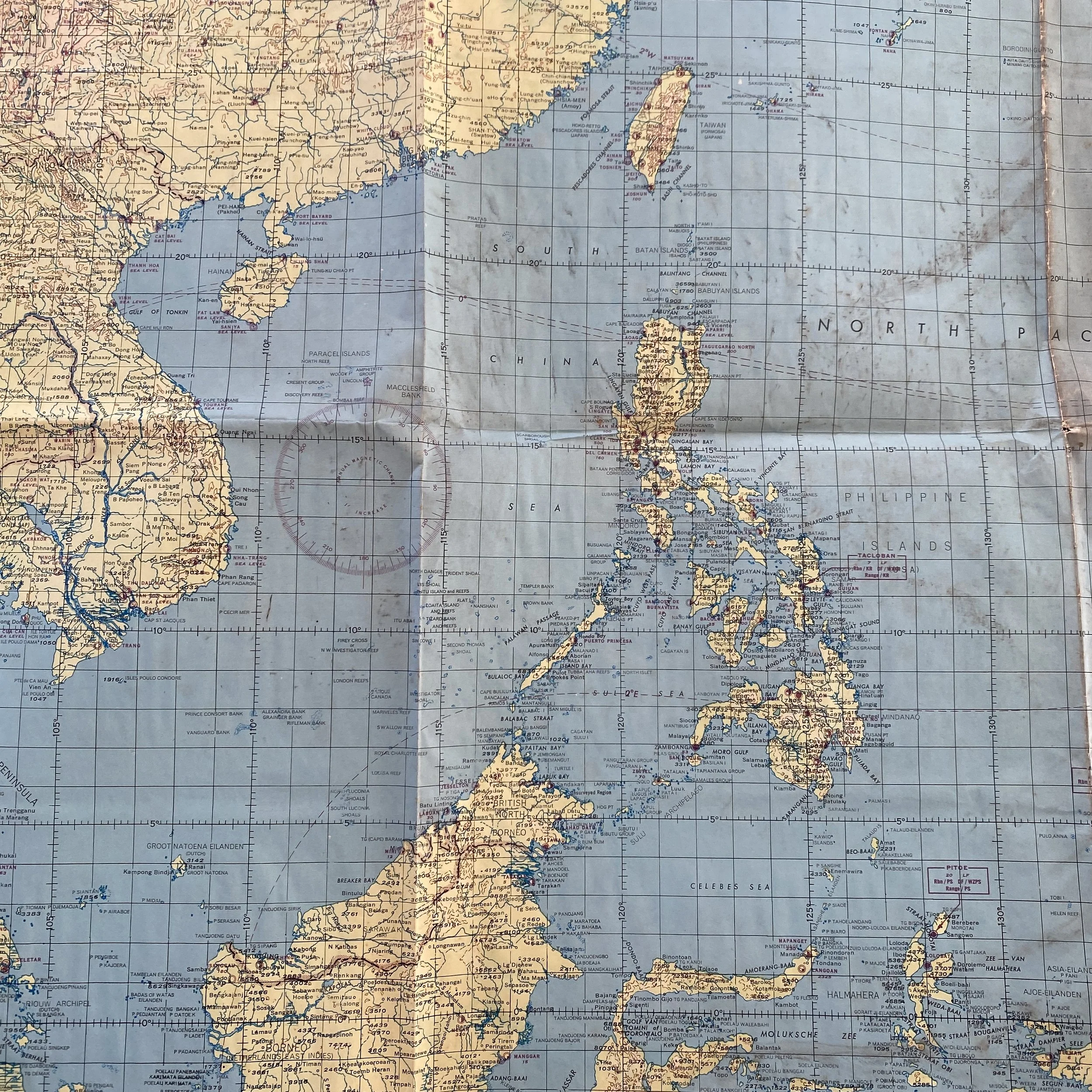
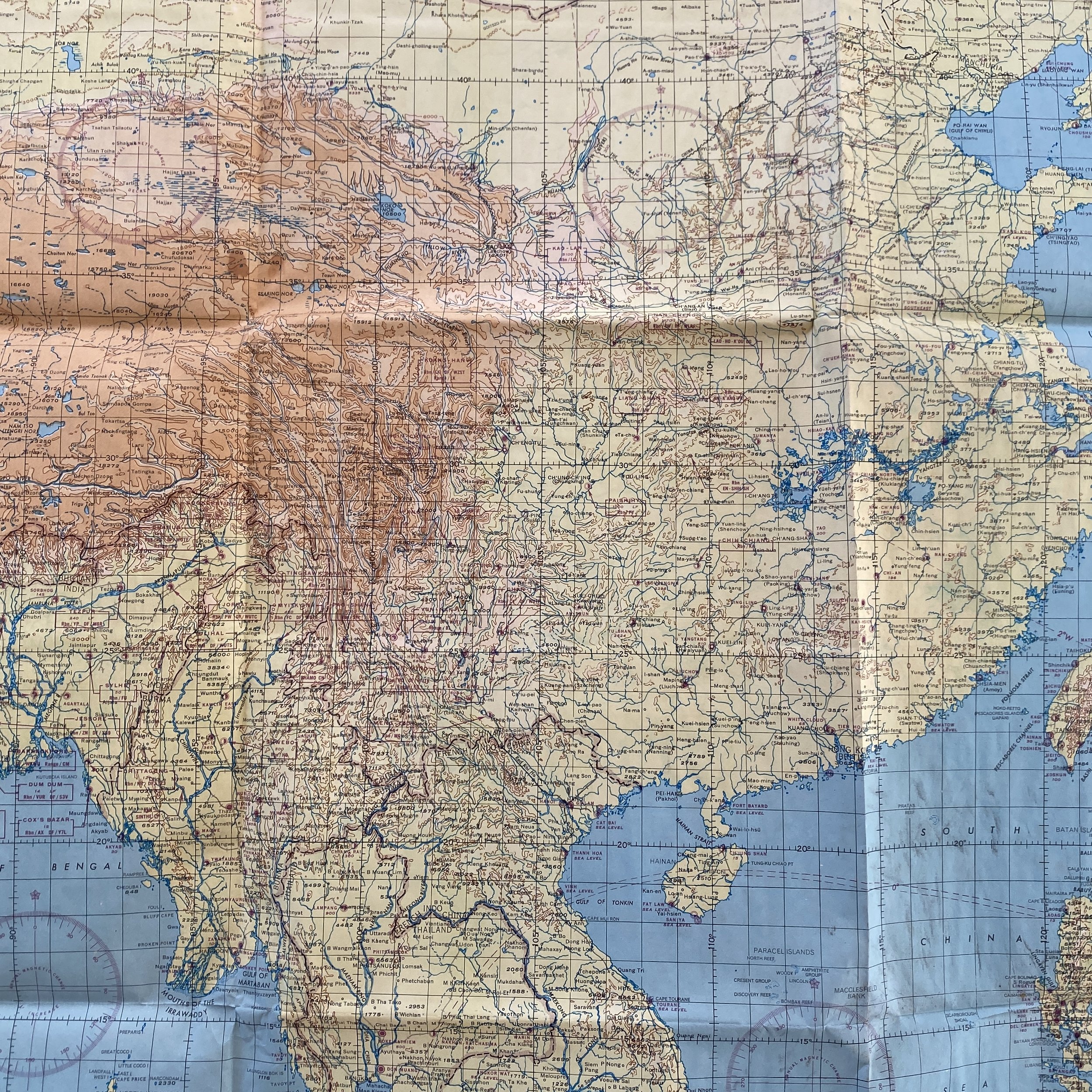


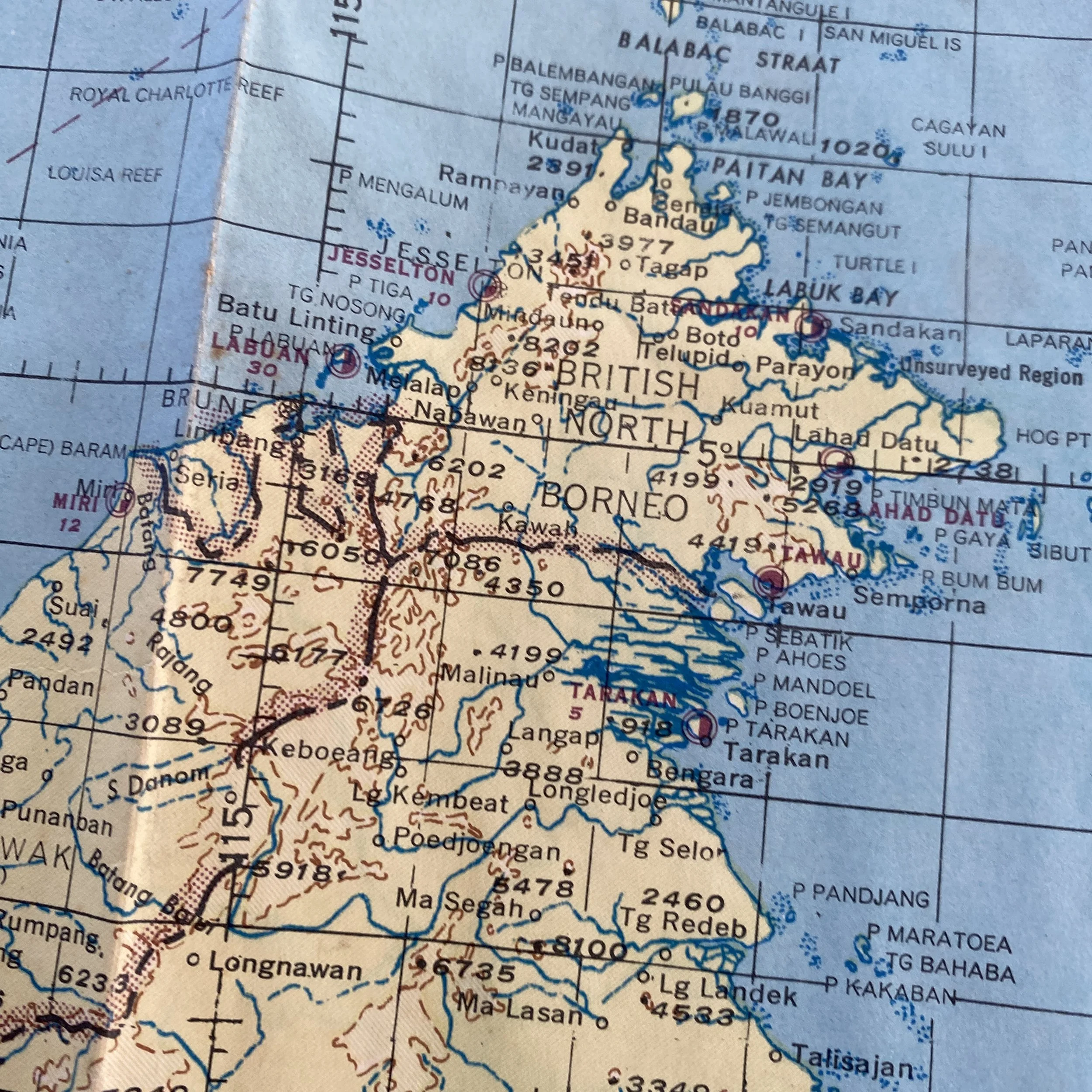






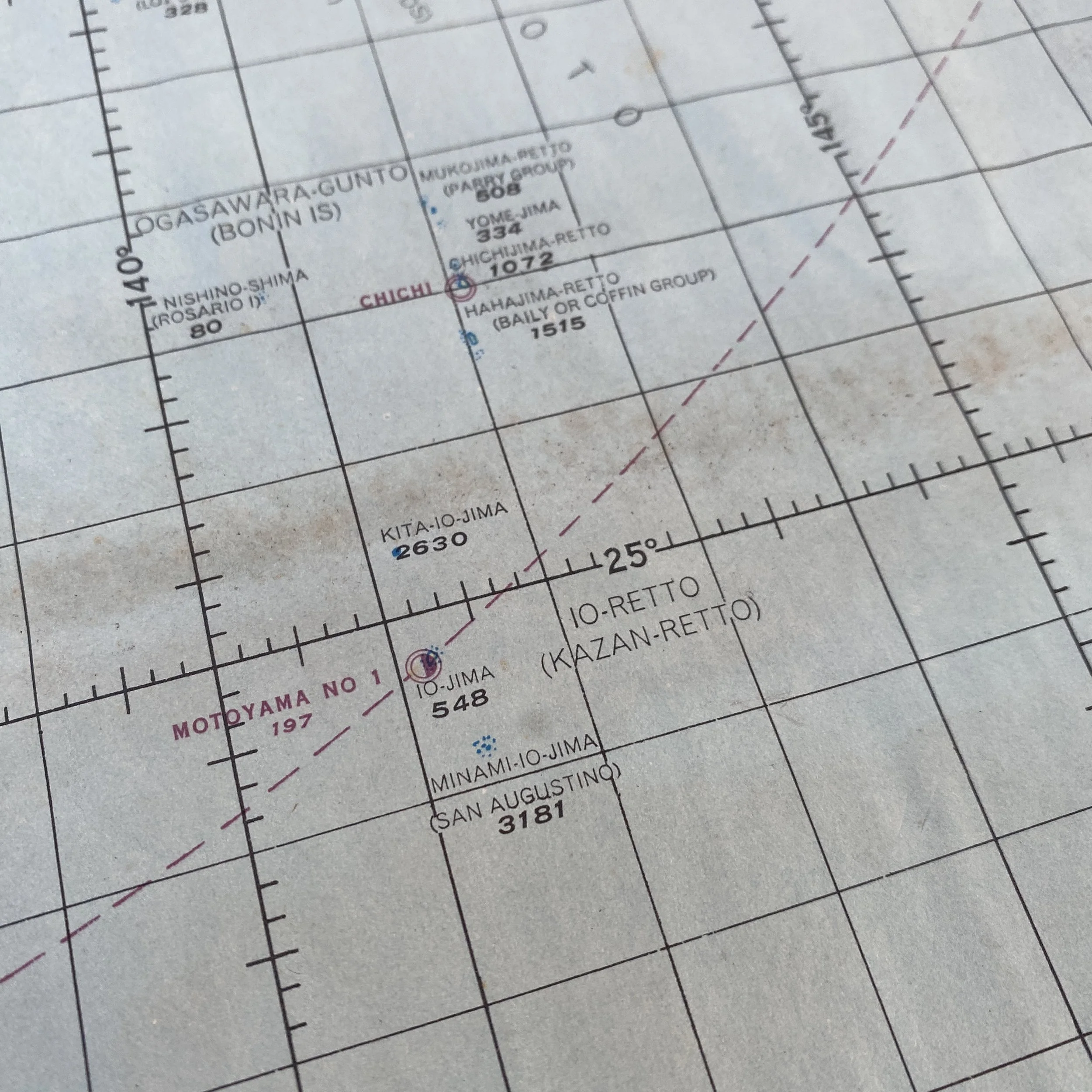

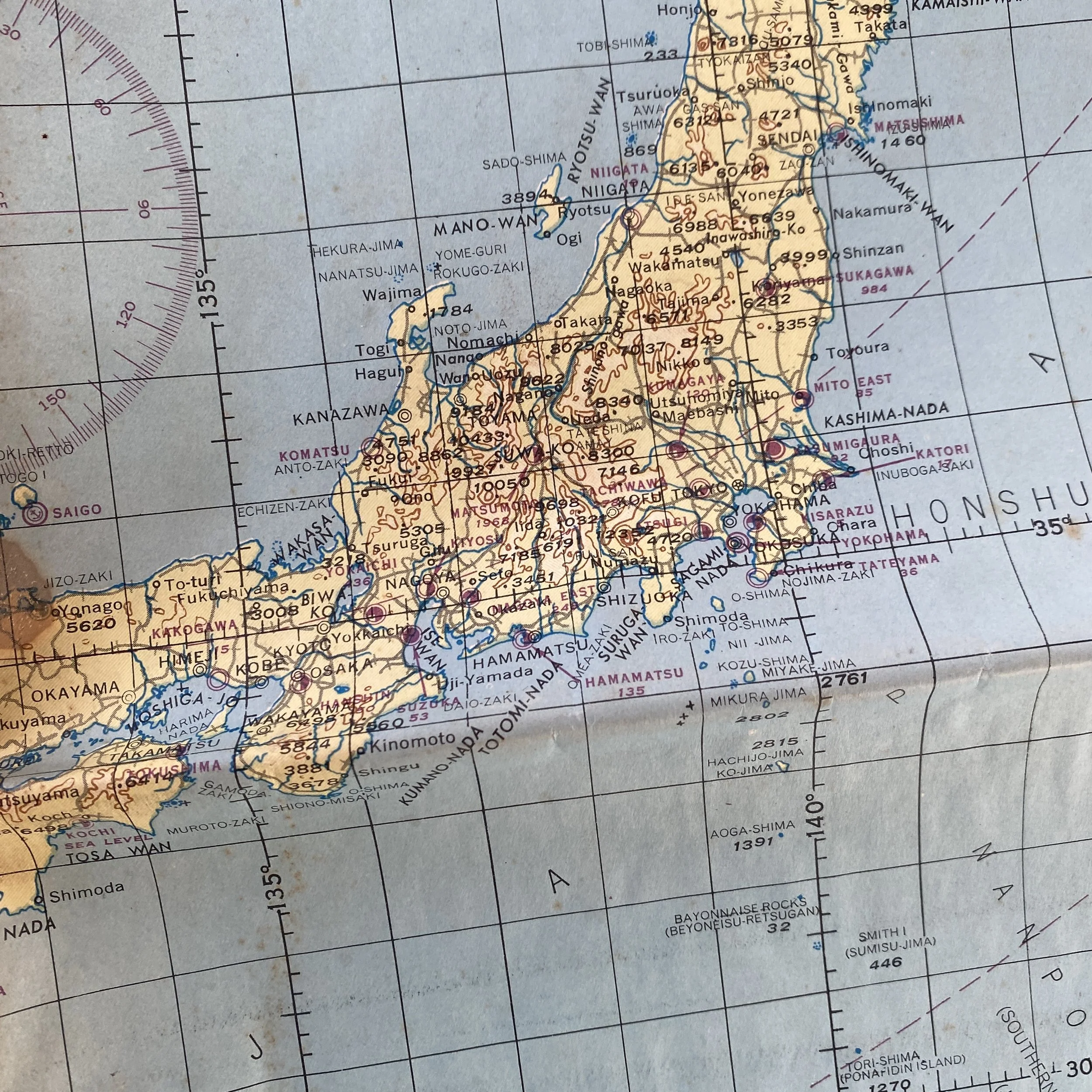

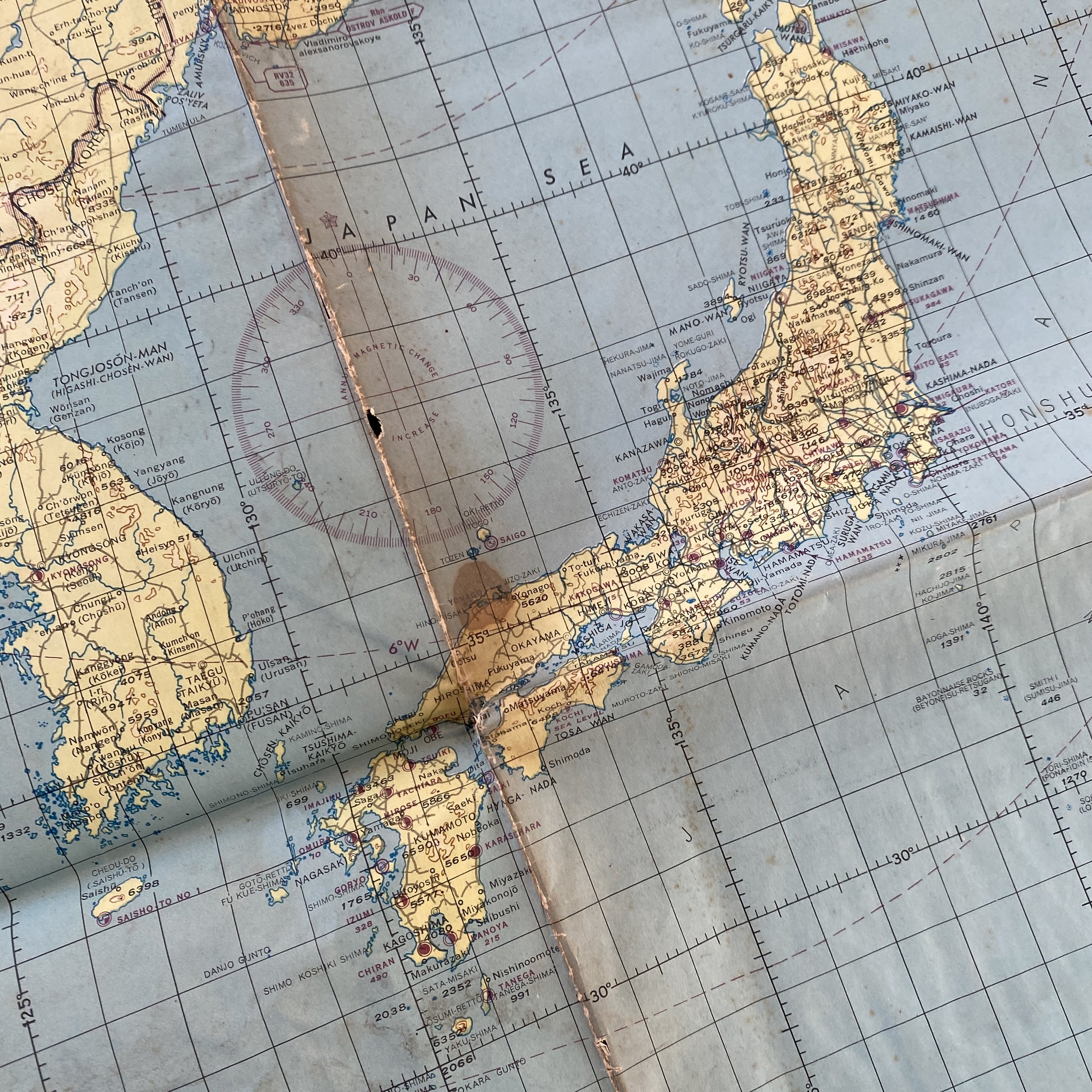
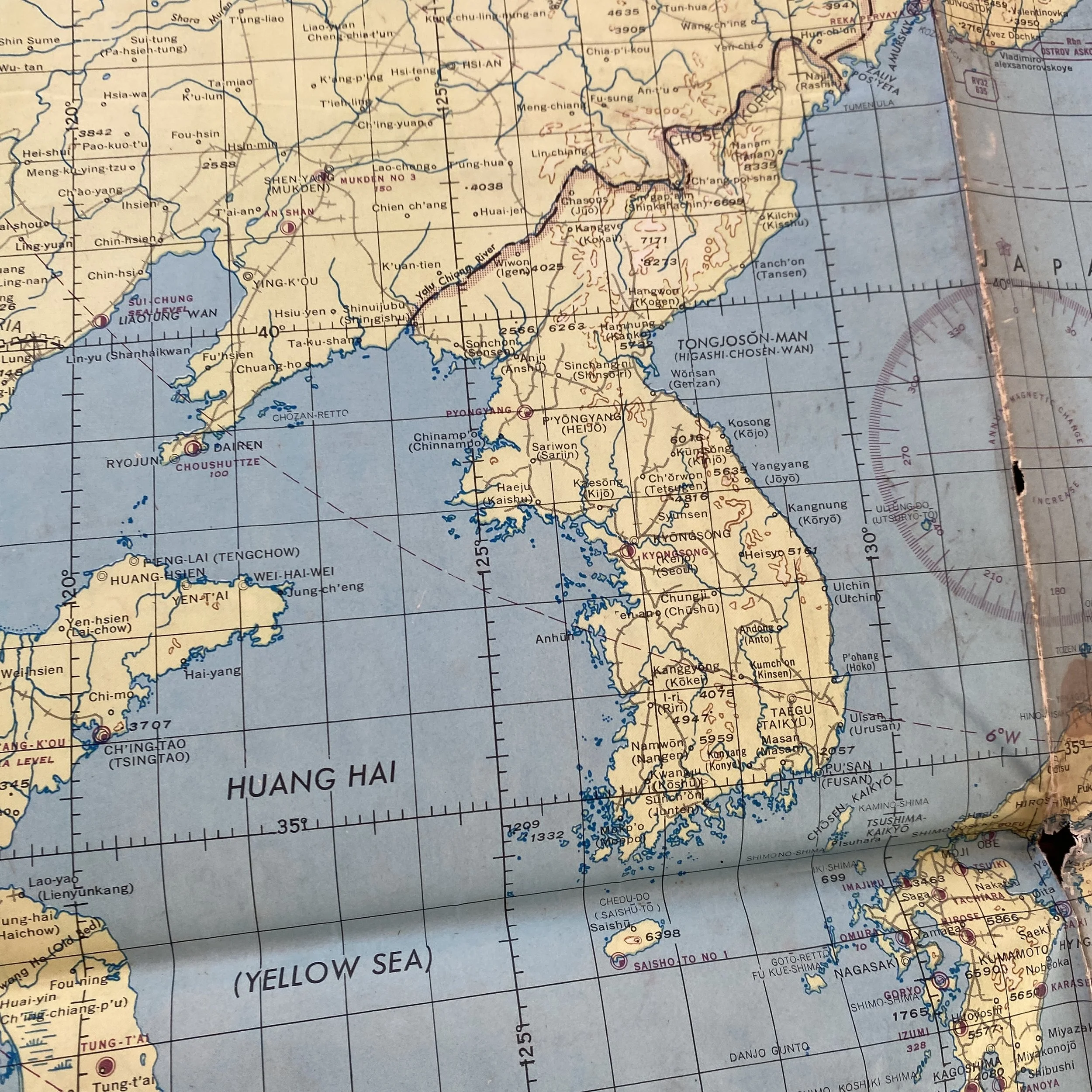

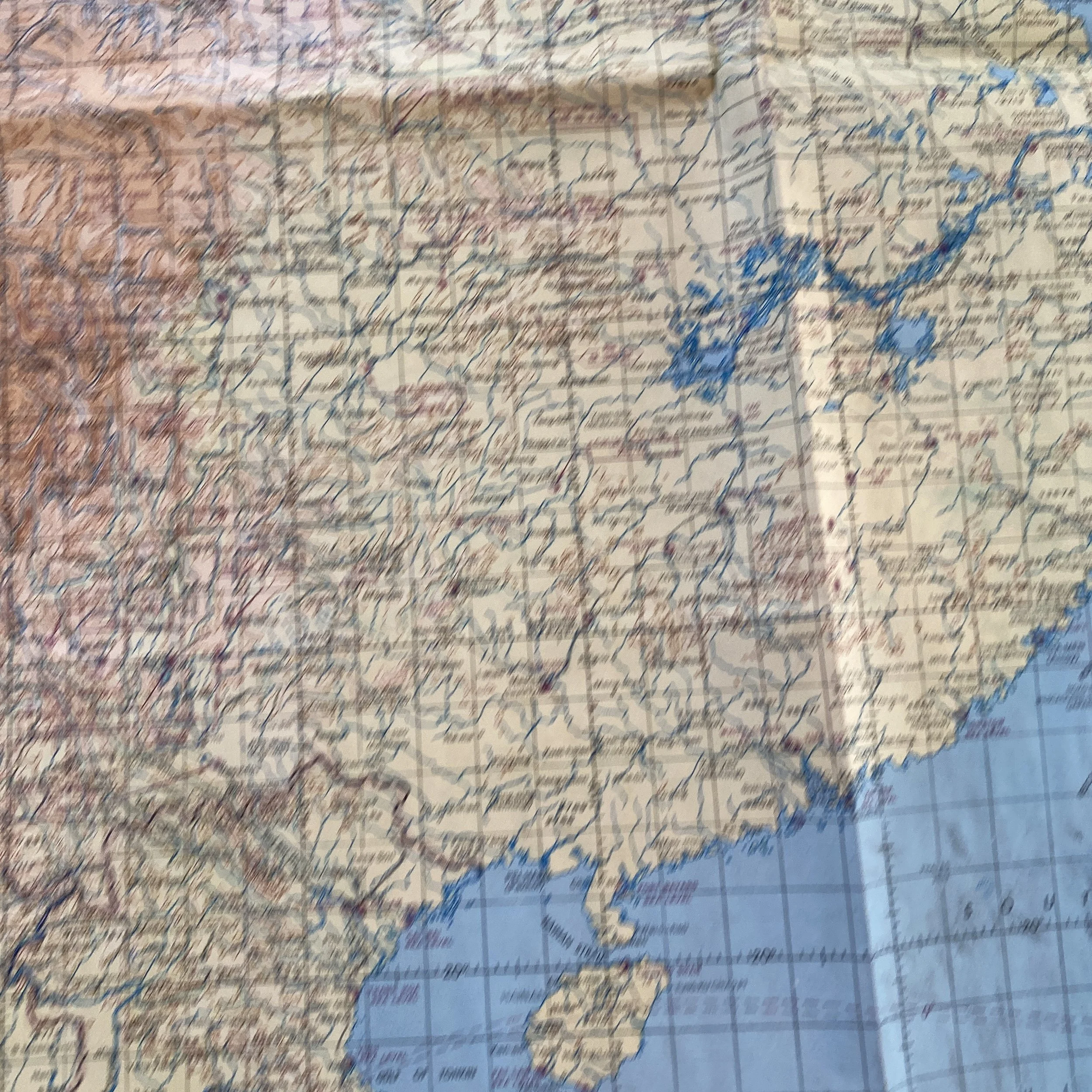

RARE! WWII 1945 USAAF B-29 Special Air Navigation Aerial Bombing Mission Map (Iwo Jima, Okinawa, Japan Missions)
Comes with C.O.A.
This rare and museum-grade World War II USAAF B-29 aerial mission map is titled "U.S. Army Air Forces - Special Air Navigation Chart". Printed in early 1945 this USAAF bombing map was used on B-29 during the last year of WWII on the Pacific Theater. This was the map that was on the bombing missions as the U.S. inched closer toward the mainland, Japan, during the amphibious landing operations of Iwo Jima, Okinawa in 1945. The B-29 was a strategic bomber aircraft used by the United States during World War II in 1945. It was a four-engine heavy bomber that was primarily used in the Pacific Theater, including the bombing of Japan. The B-29 was equipped with advanced technology for its time, including radar-assisted bombing and pressurized cabins for high-altitude flights. It was also known for being able to fly longer distances compared to other bombers of its time, which made it a valuable asset in the air war against Japan. The B-29 played a significant role in bringing an end to the war in the Pacific, and its legacy continues to this day as a symbol of American technological and military might during World War II.
This a “RESTRICTED” marked map that was used in combat theater operations. Dated 1945, this Pacific Theater air navigation map is from the rare S-108 series. This map stands out as it is one of the few produced by the U.S. Army Air Force that incorporates 11 A.A.F. Pacific Theater charts and more than 15 other charts, totaling 26 charts. The map was constructed from A.A.F. charts 7, 8, 16, 17, 18, 26, 27, 38, 39, 50 (1944) and 28, 49 (1943), as well as over 10 U.S. Hydro Air Navigational Charts from the V30 series. The map features a gradient of elevation tints, restricted radio facility locations, and channel tuning frequencies on various Allied-occupied islands in the Pacific Theater. These radio facilities, with the aid of LORAN (LOng RANge Navigation), provided navigational assistance to Allied navigators. LORAN was a more accurate radio navigation system compared to celestial navigation, particularly during the day and at night even in cloudy conditions. The map includes a detailed legend indicating Allied seaplane facilities, military bases, and beacon locations, as well as a rare legend of runway indications and length measurements. The length of the longest runway on an island is depicted with a shaded circle, which was critical for landing large planes such as heavy bombers during the Allies' bombing campaigns against Japan.
This map played a critical role in the Pacific Theater, as it was heavily relied upon by U.S. Allied air navigators. The map encompasses some of the most well-known islands in the Pacific region, including New Guinea, Borneo, Celebes, Philippines, Peleliu, the Marianas Islands, Iwo Jima, Okinawa, and Japan.
The Pacific War of World War II was one of the deadliest and most destructive wars in human history, with a significant portion of the conflict being fought on the islands of Iwo Jima, Okinawa, and mainland Japan. In the final months of the war, the United States conducted a series of bombing missions that had a profound impact on the outcome of the war and the lives of the people affected by it.
Iwo Jima was a small, volcanic island located 660 miles south of Tokyo that was considered a valuable asset for the US military. The US believed that the island would be an excellent location for a strategic air base to support their bombing missions in Japan. On February 19, 1945, the US launched a massive amphibious assault on the island, which was defended by a large force of Japanese soldiers. The battle was one of the deadliest of the Pacific War, and it lasted for 36 days. During the battle, the US dropped a significant number of bombs on the island, both to soften up the Japanese defenses and to provide close air support to the American troops. The bombing was effective in destroying much of the Japanese defenses and allowed the US to eventually take control of the island.
Okinawa was the largest of the Ryukyu Islands and was located only 340 miles from the Japanese mainland. It was considered a critical objective for the US as it would provide an ideal base for future operations against the mainland. The battle for Okinawa lasted for 82 days, and it was one of the largest and bloodiest battles of the Pacific War. The US dropped an enormous number of bombs on the island, and the bombing was intense and sustained. The bombing effectively destroyed the Japanese defenses and allowed the US to gain control of the island. The bombing of Okinawa had a profound impact on the Japanese people, as over 100,000 civilians were killed or injured, and much of the island was destroyed.
Finally, mainland Japan was the ultimate target of the US bombing campaign. The US had been bombing Japan for over a year, but the bombing campaign intensified in the final months of the war. The US used a combination of conventional and incendiary bombs to destroy the cities of Japan, and the bombing was particularly intense in the major cities of Tokyo, Nagoya, Osaka, and Kobe. The bombing campaign was intended to destroy the industrial and military capabilities of Japan and to break the will of the Japanese people. The bombing was extremely effective, and it resulted in the widespread destruction of cities and the deaths of hundreds of thousands of civilians.
In conclusion, the US bombing missions on Iwo Jima, Okinawa, and mainland Japan in 1945 had a profound impact on the outcome of the Pacific War and the lives of the people affected by it. The bombing was effective in destroying the Japanese defenses and allowed the US to gain control of key locations. The bombing of the mainland was particularly devastating, and it resulted in the widespread destruction of cities and the deaths of hundreds of thousands of civilians. The bombing campaign was a critical part of the US strategy in the Pacific War, and it played a significant role in bringing the war to an end.
The Pacific Theater of World War II saw some of the most intense fighting and brutal battles of the entire conflict. The United States and its allies launched a series of bombing missions aimed at crippling the Japanese war machine and bringing an end to the war.
One of the most famous bombing missions of the Pacific Theater was the bombing of Hiroshima on August 6, 1945. The United States dropped an atomic bomb on the city, killing tens of thousands of people and causing widespread destruction. The bombing of Hiroshima was a significant turning point in the war and is widely considered to have played a role in Japan's decision to surrender just days later.
Another significant bombing mission took place on March 9-10, 1945, when the US carried out a massive firebombing raid on Tokyo. The raid resulted in the deaths of over 100,000 people and the destruction of vast areas of the city. The firebombing of Tokyo was the single deadliest bombing mission of the Pacific Theater, and it had a profound impact on the Japanese war effort.
In addition to these major bombing raids, the United States and its allies also conducted a series of smaller bombing missions aimed at crippling the Japanese economy and military infrastructure. These missions targeted factories, shipyards, and other key industrial sites, with the goal of reducing Japan's ability to produce weapons and supplies.
Despite the heavy bombing and widespread destruction, Japan continued to fight on, and it took the additional pressure of a Soviet declaration of war and the dropping of a second atomic bomb on Nagasaki on August 9, 1945, to finally convince the Japanese to surrender.
The bombing missions of the Pacific Theater were a controversial aspect of the war and have been widely debated by historians and the general public. Some argue that the use of atomic bombs was necessary to end the war quickly and save lives, while others believe that the bombing was unnecessary and caused unnecessary suffering and death.
Regardless of one's view on the bombing missions of the Pacific Theater, it is clear that they had a profound impact on the outcome of the war and the world at large. The bombing missions played a key role in bringing an end to the war, but they also resulted in massive loss of life and widespread destruction, which continue to shape the world today.